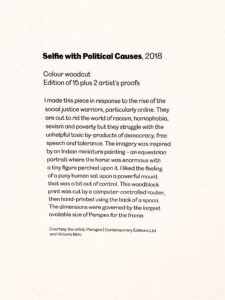Week 4 – Deconstruct Capitalism
Capitalism… what a loaded word. The first step to deconstruct anything is to break it down to understand it. According to Karl Marx, capitalism involves private ownership of production means, mass production technologies, profit-driven motives, and the accumulation of surplus value. Workers are portrayed as compelled to sell their labor power to make a living. Within this work, Marx’s theory of historical materialism is prominently developed, shedding light on the stark realities of industrial exploitation and social hardship; alienation is depicted as the dehumanization of workers and exploitation.
The way we make things reveals our ideologies, our values, flaws, and hopes and dreams. There are two types of planetary material flows: biological nutrients that benefit the biosphere and technical nutrients that serve the technosphere (industrial processes). William McDonough and Michael Braungart introduced the “Cradle to Cradle” concept in their 2002 book, “Cradle to Cradle: Remaking the Way We Make Things.” This book advocates for an environmentally sustainable approach to design and production. The Hannover Principles, written in 1992 for the EXPO 2000 World’s Fair in Hannover, Germany, serve as foundational principles for sustainable design, emphasizing our interdependence with nature. McDonough and Braungart critique the traditional “Cradle to Grave” industrial model, which results in waste, pollution, and resource depletion as products are discarded. They propose a “Cradle to Cradle” approach, where products are designed with recycling and environmental safety in mind. Cradle-to-Grave is the linear industrial model, while Cradle-to-Cradle advocates designing products for recyclability and environmental harmony. The authors coin the term “Monstrous Hybrids” for products or processes that harm the environment by combining unnatural materials. These hybrids result in pollution, waste, and resource depletion. The Cradle-to-Cradle approach focuses on using materials that can safely reintegrate into natural systems.

Grayson Perry’s Work: Selfie with Political Causes, 2018. Photo by Christina Yang.

Grayson Perry’s description: Selfie with Political Causes, 2018. Photo by Christina Yang.
I had a visit to the Royal Scottish Academy (National Galleries of Scotland) where I had the opportunity to explore Grayson Perry’s exhibition, Smash Hits. The piece, “Selfie with Political Causes” (2018) left a lasting impression because it challenges the superficial nature of our society. The artwork and Cradle-to-Cradle both critically examine the prevailing cultural norms and practices. “Selfie with Political Causes” questions the authenticity of outward appearances, highlighting the hollowness that can exist beneath constructed images. Similarly, Cradle-to-Cradle thinking encourages a reevaluation of the traditional linear industrial model, where products are designed with a focus on their outward appearance and functionality but often lack sustainability and consideration for their environmental impact.
Reference list
Lee, Deishin, and Lionel Bony. “Cradle-to-Cradle Design at Herman Miller: Moving Toward Environmental Sustainability.” Harvard Business School Case 607-003, May 2007.
Harkness, H. (2023) Theme 2_Lecture 2A [PDF], Experience and the Environment: Labour, Social Justice and Environmental Design. University of Edinburgh.